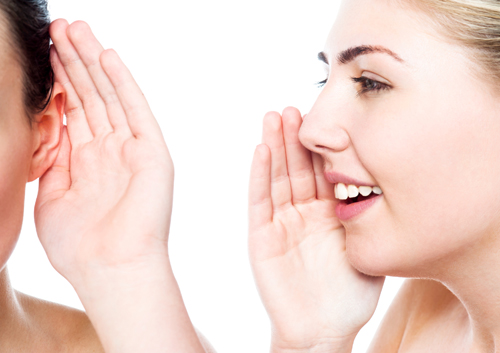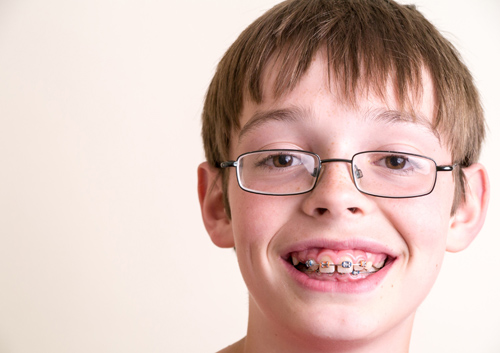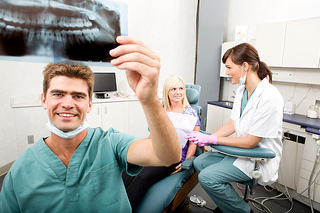January 21st, 2015

The stereotypical braces wearer – in middle school, with a mouth full of metal brackets – has led to numerous myths about orthodontics that discourage many people from getting the dental care they need. Dr. Kathleen Tavarez and our staff would like to put some of these myths to rest.
Myth 1: Orthodontic treatment is for kids. Although teenagers often visit the orthodontist to get braces, adults represent a growing proportion of orthodontic patients. Whether you’re eight or 80, a consultation with an orthodontist can identify problems with your teeth, jaws, or bite that can be corrected by orthodontic interventions.
Myth 2: Traditional, metal braces are my only option. Advances in orthodontic technology have rendered improved braces and other orthodontic appliances that are much less noticeable than the braces of yesteryear. Ask Dr. Kathleen Tavarez about Invisalign® braces and other options that make sense for your situation.
Myth 3: Orthodontic treatment is only helpful for crooked teeth. Sure, a crooked smile is a common reason that patients seek orthodontic care. However, orthodontic interventions help with a range of dental health problems. From missing teeth to overbite to jaw misalignment, your orthodontist can help with many problems associated with the teeth, gums, and jaws.
Myth 4: Orthodontic treatment is too expensive. As with any medical procedure, orthodontics can be pricey. However, our Menlo Park or San Carlos, CA team works with patients to find payment plans, insurance coverage, or other payment options that reduce the financial burden.
January 14th, 2015

The average age of individuals who get braces is between nine and 14, although it is appropriate for younger children to visit Tavarez Orthodontics for a consultation with Dr. Kathleen Tavarez. While parents may be concerned about the efficacy of early orthodontics, research suggests that early intervention can prevent greater dental health problems later in life.
What types of conditions require early intervention?
According to the American Association of Orthodontists, 3.7 million children under the age of 17 receive orthodontic treatment each year. Early intervention may be appropriate for younger children with crooked teeth, jaw misalignment, and other common issues. Early orthodontic treatment may be of use for several types of problems:
- Class I malocclusion. This condition is very common. It features crooked teeth or those that protrude at abnormal angles. In general, early treatment for Class I malocclusion occurs in two phases, each two years long.
- Class III malocclusion. Known as an underbite, in which the lower jaw is too big or the upper jaw too small, Class III malocclusion requires early intervention. Because treatment involves changing growth patterns, starting as early as age seven is a smart choice for this dental problem.
- Crossbite. Crossbite occurs when the upper and lower jaws are not properly aligned. An orthodontic device called a palatal expander widens the upper jaw, allowing teeth to align properly. Research suggests that early treatment may be beneficial in crossbite cases, especially when the jaw must shift laterally to correct the problem.
- Tooth extraction. That mouthful of crooked baby teeth can cause problems when your child’s permanent teeth erupt. For kids with especially full mouths, extracting baby teeth and even permanent premolars can help adult teeth grow in straight.
Considerations when thinking about early intervention
Early intervention isn’t helpful for all conditions. For example, research suggests that there is little benefit to early orthodontics for Class II malocclusion (commonly known as an overbite). Instead, your child should wait until adolescence to begin treatment. Scheduling a visit to our Menlo Park or San Carlos, CA office when your child is around age seven is a smart way to create an individualized treatment plan that addresses unique orthodontic needs.
January 7th, 2015

Orthognathic surgery is surgery to correct a wide variety of abnormalities of our patients' jaw and teeth. The surgery is often done in conjunction with orthodontic treatment. While the patient’s appearance may be significantly improved as a result, the primary purpose of the surgery is to correct functional problems including but not limited to:
- Unbalanced facial appearance
- Protruding jaw
- Open bite (upper and lower teeth don’t overlap properly
- Excessive wearing down of the teeth
- Difficulty with chewing or biting
- Chronic mouth breathing
- Sleeping problems such as sleep apnea
- TMJ pain (jaw joint pain)
- Restoring facial injuries
Knowing when to start the orthodontic treatment in preparation for orthognathic surgery can also be tricky if our team at Tavarez Orthodontics is treating a teenager. It is important to know when to get started. If orthodontic treatment is initiated too soon and the teenager is still growing, the patient will either need to hold in braces until his or her growth is complete and they are ready for surgery or the braces will have to be removed and then placed again when growth is complete. Neither of these options is attractive since it requires longer time in treatment, which is something all our patients want to avoid. Our team at Tavarez Orthodontics strives to get all patients finished with treatment as quickly as possible because it is healthier for the teeth and gums and gives them a beautiful smile to enjoy for a lifetime.
If you are considering orthognathic surgery or you have been told that you need jaw surgery, give us a call to schedule your initial consultation today. Dr. Kathleen Tavarez and our team at Tavarez Orthodontics will explain our treatment plan in a way you will understand and we will keep you informed every step of the way.
December 31st, 2014

Watching the clock tick down the final seconds until midnight, many of us- Tavarez Orthodontics included- feel nostalgic about the passing year and hopeful about the new one to come. New Year’s Eve is one of the most widely celebrated holidays in the world, with over-the-top celebrations taking place in dozens of countries. The Gregorian calendar, which is widely used in Western nations and around the world, was implemented in 1582. Since that time, December 31st has marked the final day of the year, with midnight heralding the beginning of a brand new year. In the United States, New Year’s Day is a public holiday; government offices, schools, public organizations, and many businesses are closed for the day. Ponder the following fun facts as you think about your plans for the holiday:
- Approximately one billion people watch the New Year’s Eve ball drop in Times Square, New York City. This televised event is one of the most iconic New Year’s celebrations in the world. For many years, watching the ball drop meant tuning in to Dick Clark’s Rockin’ New Year’s Eve, an iconic television special dear to the hearts of many viewers.
- The idea for the New Year’s Eve ball came about because of a citywide ban on fireworks. Before 1907, when fireworks became illegal in New York City, celebrations included an elaborate fireworks show. The large, glittering, illuminated ball was developed as an alternative. Although the first ball was heavy at 700 pounds, the modern New Year’s Eve ball is made of Waterford crystal and tips the scale at six tons!
- The top five New Year’s resolutions are: to lose weight, quit smoking, get a new job, return to school, or increase personal savings. However, approximately 88% of New Year’s resolutions fail. But don’t let that discourage you! Resolutions are most likely to succeed when they are clear, achievable goals. Setting out a concrete plan to achieve your resolution also boosts your chances of success.
- Eating black-eyed peas on New Year’s Day is said to bring good fortune in the new year. Collard greens, cabbage, and ham hocks are also considered lucky foods to enjoy. Just steer clear of the chicken or turkey dinners; eating poultry is a bad omen for the year to come.
Whether you plan to stay in Menlo Park or San Carlos, CA, or head out into the crowds to watch the ball drop in Times Square, New Year’s Eve is a time to enjoy friends and family. Send your loved ones well wishes for the New Year, and look for that special someone to share a midnight kiss with for good luck!











 Website Powered by Sesame 24-7™
Website Powered by Sesame 24-7™